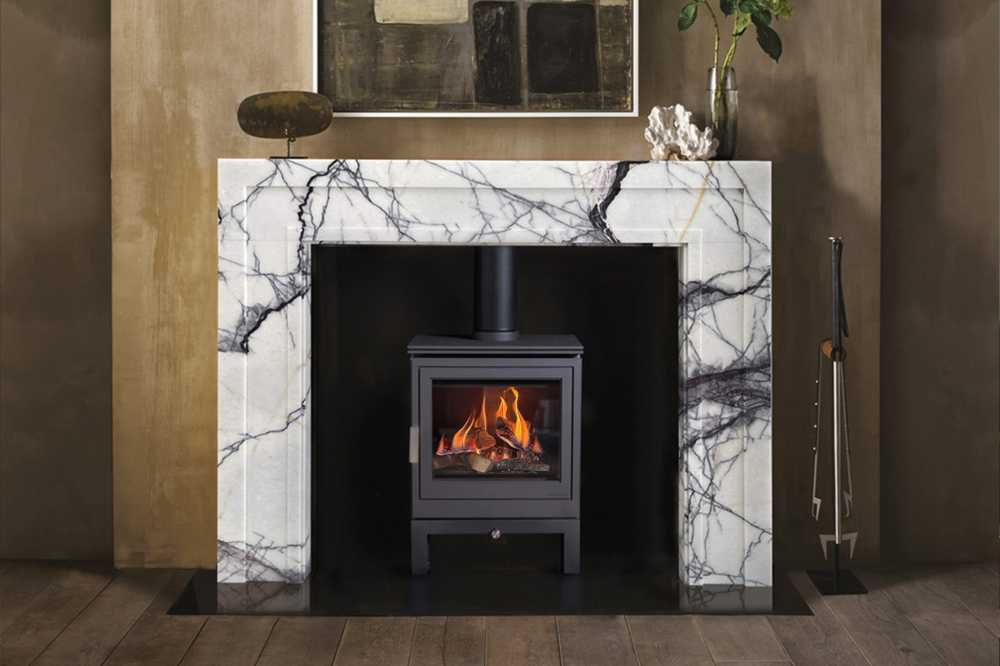

For many, the conservatory is the perfect spot for relaxation. Panoramic garden views bring the outside in, making it an ideal spot for winding down at the end of the day. But this room is often abandoned in the winter months for warmer rooms, prompting many homeowners to consider installing a log burner to optimise their use of this space.
In this article, we’ll explore whether you can install a log burner in a conservatory, covering building regulations, ventilation, and key safety considerations to help you make an informed decision.
Can You Have a Log Burner in a Conservatory?
While you can have a log burner in a conservatory, UK building regulations compliance, correct installation, and safety checks are vital. Otherwise, you risk your health and wellbeing and that of your loved ones, and your home.
Provided careful research and planning is carried out, a log burner can benefit unheated conservatories, reducing the likelihood of condensation and mould formation during the colder months.
Key Considerations Before Installing a Log Burner
Building Regulations and Planning Permission
Safety is key when installing a log burner in a conservatory. Therefore, it must comply with UK building regulations. At Chesneys, we recommend seeking a HETAS-approved installer, as they have an intimate understanding of the key regulations that any installation must adhere to, including:
- Combustible distance — The stove must sit appropriately far from walls and flammable materials.
- Hearth requirements — Non-combustible hearths are essential to protect your conservatory’s floor from falling embers and heat damage. It must be at least 12mm thick and extend 300mm to the front and 150mm to either side of the burner.
- Flue placement — For proper smoke dispersal, the flue must exit through an external wall or roof and extend beyond the conservatory’s highest point.
- Ventilation — Combustion and smoke dispersal require proper airflow.
If you live in a listed building or a conservation area, you will also need to acquire planning permission.
Flue and Chimney Requirements
Since conservatories are generally flueless, you’ll need a twin wall flue system. Otherwise called double-insulated flues, these systems ensure you can place a wood burner in your conservatory without needing a brick-built chimney.
Relatively easy to install, twin wall flues must be positioned at least 2.3 metres from a window and be at least 4.5 metres tall/exceed the highest point of the conservatory for proper smoke dispersal and ventilation.
Heat Output and Room Size
Choosing the correct stove size avoids overheating or under-heating your conservatory, ensuring comfort. To calculate this, you need to measure the size of your conservatory:
- Measure the width, length, and height.
- Multiply the width, length, and height.
- Divide it by 14 to get the kW output.
For figures between 4kW and 6kW, a small log burner will suffice. For figures between 7kW and 9kW, you need a medium burner. For higher figures, choose a large stove.
Note: This is only a rough guide. The exact size of stove you require depends on the ventilation system and insulation level of your conservatory.
Safety and Ventilation
Ventilation allows safe combustion and prevents hazardous smoke buildup. As such, your stove may need an air vent to draw fresh air, especially if your stove exceeds 5kW or your home was constructed after 2008.
That said, modern stoves often boast direct air supply, eliminating the need for an air vent to reduce drafts and boost efficiency.
Ensure the stove’s surroundings are heat-resistant. Avoid placing soft furnishings too close to the burner and consult a HETAS-approved installer to make certain your hearth is sufficient for the stove size.
Beyond ventilation and heat-resistant materials, carbon monoxide alarms are a must-have as faulty burners leak the invisible, odourless emissions. An alarm is essential for safety.
Best Types of Log Burners for Conservatories
The best type of log burner for your conservatory will depend on its size, but any modern log burner boasting high efficiency ratings will offer the yearned-for cosiness. Just keep in mind that, due to the often-limited space in conservatories, it may not be possible to install a larger model. Try smaller, more efficient options instead.
For those in smoke control areas, acquiring a DEFRA-approved stove is required for compliance. All Chesneys log burners are DEFRA-approved.
Alternative Heating Options to Consider
Log burners aren’t the only option for bringing a touch of cosiness to your conservatory. There are also:
- Electric stoves, which require no flue, making them exceptionally easy to install. However, they lack the primal beauty of authentic flickering flames.
- Bioethanol fires are ecologically friendly and efficient alternatives to traditional wood burners. They burn fuel extracted from plants to emit a living flame that rivals logs.
- Underfloor heating and/or radiators are suitable for those who require heat without the extra cosy feel of a burner.
Pros and Cons of Installing a Log Burner in a Conservatory
| Pros | Cons |
| Cosy atmosphere | Upfront cost |
| Allows for year-round conservatory use | Restrictions and regulations |
| Adds value to your home | Limited space for larger stoves |
Is a Log Burner Right for Your Conservatory?
With proper installation, a log burner is a stylish yet practical way to transform your conservatory into a cosy, welcoming living space, affording you year-long use of an otherwise summer-only room.
To prevent installation issues and guarantee compliance with the UK’s building regulations, always consult a HETAS installer. They’ll be able to help you choose the right log burner for your space before hassle-free installation.
